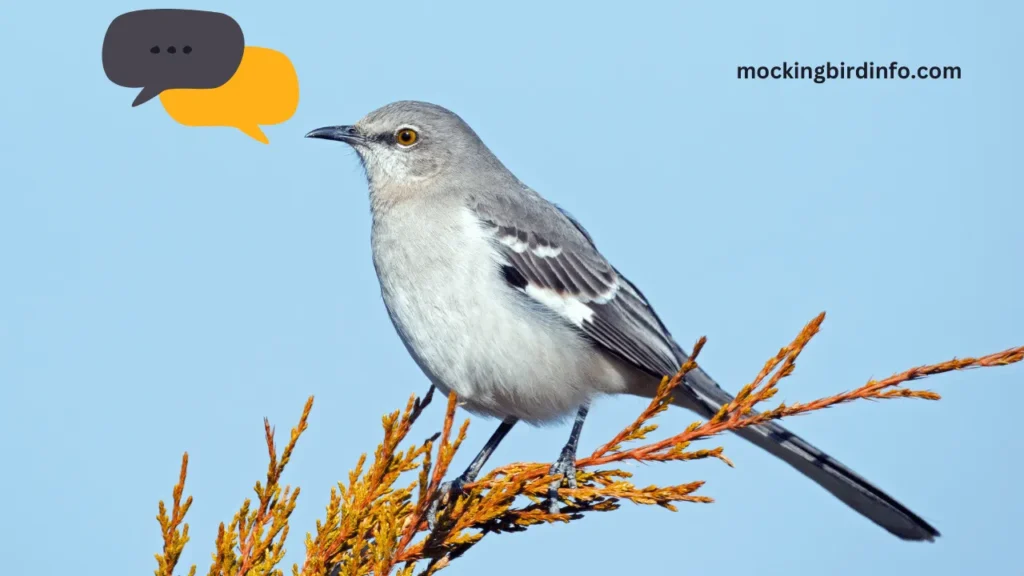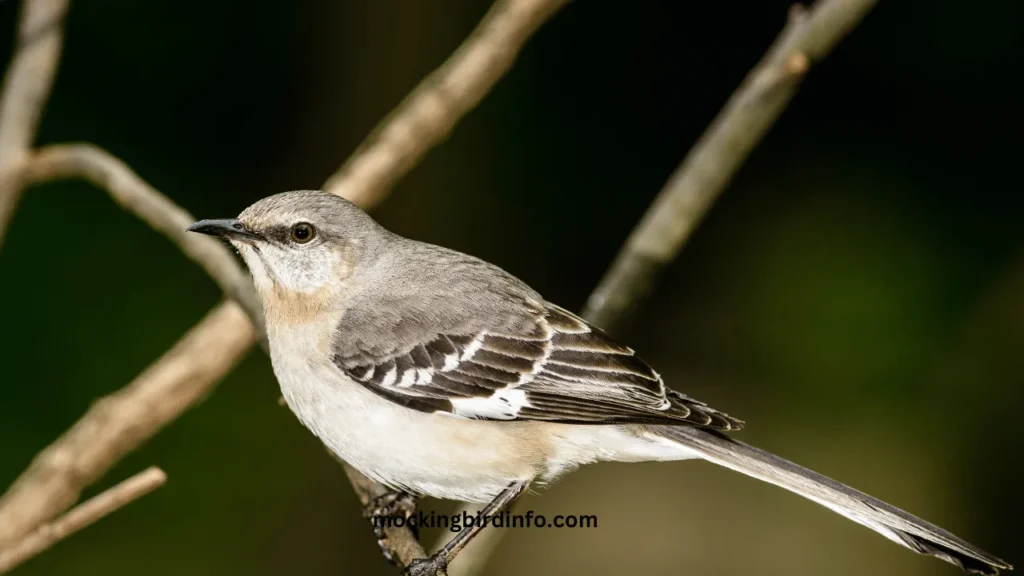Imagine strolling through a park, when suddenly, you hear a dog barking, a car alarm blaring, and then—surprisingly—someone saying “hello.” But there’s no one around, and the sounds are coming from a bird perched nearby.
This is a behavior many people attribute to mockingbirds, known for their extraordinary ability to imitate the sounds of their environment, including human speech.
The mystery and fascination surrounding these birds have led to countless questions: Can mockingbirds truly talk like humans? Are they capable of communication beyond simple mimicry?
The truth is that mockingbirds, while incredible mimics, cannot “talk” in the human sense of the word. They can reproduce human speech, but they do not comprehend or use language as humans do.
This article will explore the boundaries of mockingbird vocalizations, what they can mimic, why they do it, and what sets their abilities apart from true communication.
By the end, you’ll have a clearer understanding of these birds’ unique vocal abilities and why they can never truly “speak” in the way humans do.
Let’s delve into the fascinating world of mockingbirds and their complex relationship with sound, exploring the extent of their mimicry, the limitations they face, and how they fit into the broader picture of animal communication.

Contents
The Extent of Mimicry
Vocal Range: Mockingbirds are renowned for their ability to imitate a diverse array of sounds. These birds have an impressive vocal range, which includes the calls of other bird species, animal noises, mechanical sounds like car alarms, and even human speech.
They can copy the chirp of a sparrow, the whistle of a distant train, and the honk of a car horn. Mockingbirds are capable of reproducing sounds that they hear in their environment, making them incredibly versatile.
Their ability to imitate these sounds is not just for fun—it’s often a key part of their territorial behavior and mate attraction.
Accuracy of Imitation: The accuracy of mockingbirds’ imitations can be uncanny. When a mockingbird mimics a sound, whether it’s the call of another bird or the bark of a dog, it’s often remarkably precise.
This accuracy can sometimes be so convincing that people mistake it for the real sound, causing confusion and amazement. Some mockingbirds have been known to imitate the human voice to such an extent that listeners may believe a person is nearby, when in reality, it’s just the bird mimicking a phrase it overheard.
Their ability to reproduce these noises with such precision shows just how sophisticated their vocalizations can be.
Purpose of Mimicry: Scientists have theorized several reasons behind the mockingbird’s remarkable mimicry. One prevalent theory is that mockingbirds mimic sounds to attract mates.
A male mockingbird’s ability to produce a wide variety of sounds can be a display of his fitness and health, signaling to females that he is a strong potential mate.
Another theory suggests that mockingbirds mimic to defend their territory. By imitating the calls of other species, they may create the illusion of a larger, more crowded area, deterring other males from encroaching on their space.
In some cases, mimicry may simply be a form of entertainment or mental stimulation for the bird, as they replicate what they hear around them.
The Limitations of Mimicry
Lack of Understanding: Despite their ability to replicate human speech, mockingbirds do not understand the meaning of the words they imitate. When a mockingbird mimics a word or phrase, it’s simply repeating a sound it has heard.
For example, a mockingbird may replicate the word “hello,” but it doesn’t know that “hello” is a greeting—it only knows how to produce the sound of that word. This lack of understanding differentiates imitating from communicating.
Unlike humans, who use language to exchange meaningful information, mockingbirds do not use the sounds they mimic in any functional way.
Biological Constraints: The reason mockingbirds cannot produce human-like speech is rooted in their anatomy. Birds, including mockingbirds, produce sounds using a specialized organ called the syrinx, which is located at the base of the trachea.
While this organ is highly efficient and versatile, it does not have the same level of complexity as the human vocal cords. Human vocal cords can stretch and adjust to produce a wide range of sounds, whereas a bird’s syrinx is limited in the types of sounds it can make.
This anatomical difference is a key reason why birds, even the most skilled mimics, cannot produce the full range of sounds that humans can.
Cognitive Abilities: While mockingbirds are intelligent and capable of learning a variety of sounds, their cognitive abilities are not on par with human intelligence.
Birds have different brain structures and do not possess the complex neural mechanisms that humans use to understand language. Mockingbirds do not have the ability to comprehend abstract concepts like humans do.
They cannot link the sounds they mimic to specific meanings or contexts. Therefore, while their vocalizations may sound like human speech, they are not part of a true language system.

The Science of Bird Communication
Bird Songs: Bird songs are a form of communication that serves several important functions in a bird’s life. Unlike human speech, which is primarily used for complex communication, bird songs are used to convey more specific messages, such as territorial boundaries, mate attraction, and warning signals.
Mockingbirds, in particular, use their songs to claim territory and to attract potential mates. By producing a wide variety of sounds, they signal to other birds that they are established and ready to defend their space.
Some species of birds also use songs to signal the presence of predators, warning others of danger.
Neural Mechanisms: The production of bird songs involves sophisticated neural mechanisms. When mockingbirds learn to imitate a sound, their brain processes the auditory signals and creates a mental template of the sound.
The bird’s song control system then helps the bird replicate the sound. These processes are guided by the bird’s neurological circuitry, which is designed for auditory learning rather than language comprehension.
While the bird’s brain is adept at copying sounds, it does not possess the neural networks required for human-like language processing.
Evolutionary Significance: Birdsong, including the mimicry of species like the mockingbird, plays a significant role in the evolutionary success of the species.
By mimicking a variety of sounds, a mockingbird increases its chances of attracting a mate. A bird with a more varied and intricate song is often perceived as healthier or more capable, thus improving its chances of reproducing.
Additionally, mimicry can help establish and maintain a bird’s territory by creating the illusion of a larger presence, which deters rival males from encroaching.
Misconceptions and Urban Legends
Talking Birds: The idea that certain birds, such as mockingbirds, can “talk” is a misconception rooted in the remarkable ability of some species to imitate human speech.
While these birds can reproduce words and phrases, it is important to recognize that they are not engaging in true communication. True language involves understanding and the ability to use words within a context, which mockingbirds do not do. They are imitators, not conversationalists.
Viral Videos and Hoaxes: In today’s world, viral videos can distort reality, and this is often the case with videos of “talking” birds. Some videos may show birds imitating human speech, and while this can be impressive, it is important to remember that the birds are simply mimicking sounds, not actually understanding or using them in conversation.
In many cases, these videos are edited or exaggerated to make the birds appear more capable of talking than they actually are. This contributes to the widespread myth that birds can communicate in the same way humans do.
Conclusion
In conclusion, while mockingbirds are capable of extraordinary mimicry, they cannot truly “talk” in the human sense. They can repeat human words and phrases, but this mimicry is not a form of meaningful communication.
Mockingbirds use their vocal abilities primarily for purposes related to territoriality and mate attraction, and their mimicry of human speech is simply a byproduct of their diverse vocal range. They lack the cognitive abilities and biological structures necessary for understanding and using language.
Despite this, mockingbirds remain fascinating creatures, showcasing the wonder of nature’s complexity. Their vocal abilities allow them to communicate effectively within their species and demonstrate the sophistication of animal behavior.
As we continue to study the behavior of mockingbirds and other birds, we are reminded of the incredible diversity of communication methods in the animal kingdom, and the importance of understanding these behaviors in their proper context.
FAQs
1. Can mockingbirds speak human language?
No, mockingbirds can imitate human speech but do not understand the meaning of the words they repeat.
2. Why do mockingbirds mimic human speech?
Mockingbirds mimic human speech as part of their wide vocal range, which they use to attract mates, defend territory, and express themselves.
3. Can mockingbirds understand what they say?
No, mockingbirds do not understand the meanings of the words they mimic. They are simply repeating sounds they’ve heard.
4. Do mockingbirds learn to mimic sounds?
Yes, mockingbirds learn new sounds through auditory learning and practice. They can imitate a wide range of sounds they hear in their environment.
5. What other sounds can mockingbirds mimic?
Mockingbirds can imitate various sounds, including the calls of other birds, mechanical noises, car alarms, and even human voices.
6. How many sounds can a mockingbird mimic?
Mockingbirds can mimic up to 200 different sounds, depending on the individual bird and its environment.








